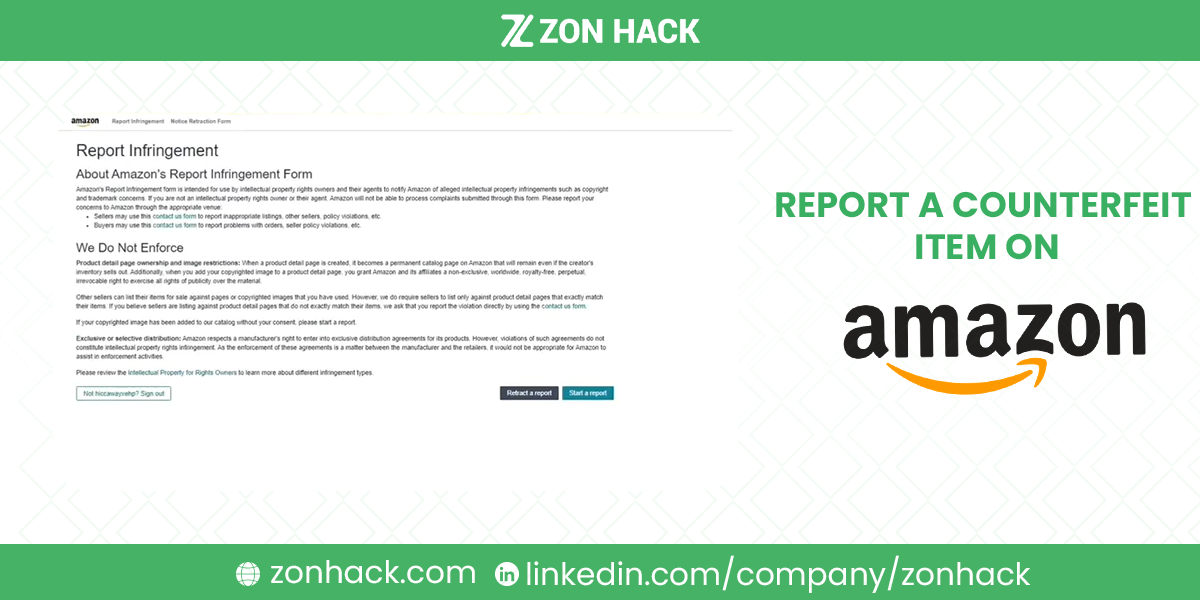In the vast marketplace of online shopping, counterfeit products have become an increasing concern for consumers and brands alike. The digital marketplace presents unique challenges in identifying and eliminating fake items that can potentially harm businesses and mislead unsuspecting customers. Amazon, as a leading e-commerce platform, has developed robust mechanisms to help brand owners and consumers combat the proliferation of counterfeit goods.
The Importance of Reporting Counterfeit Items
Counterfeit products are more than just a nuisance; they represent a serious threat to legitimate businesses and consumer safety. These unauthorized replicas can cause significant financial damage, erode brand reputation, and potentially expose consumers to inferior or even dangerous products. Understanding the impact of counterfeits highlights the critical nature of reporting and removing these items from the marketplace.
Ways to Report a Counterfeit Item on Amazon
Method 1: Standard Reporting
When you first discover a suspicious product that seems to be a counterfeit, Amazon’s standard reporting process offers an accessible first line of defense. This method is designed to be user-friendly and straightforward, allowing both consumers and brand owners to quickly flag potentially infringing items.
1. Identify the Infringing Product:
- Locate the ASIN: Find the unique product identifier (ASIN) of the suspected counterfeit product. This is usually a 10-character alphanumeric code found in the product URL.
- Gather Details: Note the product title, seller name, and any specific details about the infringement, such as misleading product descriptions or counterfeit packaging.
2. Access the Reporting Tool:
- Visit the Reporting Page: Go to Amazon’s official infringement reporting page: https://www.amazon.com/report/infringement
- Sign In: Log in to your Amazon account to access the reporting form.
3. Fill Out the Report Form:
- Provide ASIN: Enter the ASIN of the infringing product.
- Specify Infringement Type: Select the relevant type of infringement (e.g., trademark, copyright, patent).
- Upload Evidence: Attach any supporting documents, such as:
- Trademark registration certificate
- Copyright registration certificate
- Patent certificate
- Purchase orders or invoices for the counterfeit product
- Photos or screenshots of the infringing listing
- Provide Detailed Description: Clearly explain how the product infringes on your intellectual property rights. Be specific and provide as much detail as possible.
4. Submit the Report:
- Review your report for accuracy and completeness.
- Submit the report to Amazon.
Method 2: Amazon Brand Registry
For brand owners seeking comprehensive protection, the Amazon Brand Registry offers a powerful and sophisticated approach to combating counterfeit products. This method provides enhanced tools and greater control over product listings and intellectual property protection.
Method 3: Reporting Through Amazon Brand Registry
Note: This method is only available to sellers enrolled in Amazon Brand Registry.
1. Log in to Amazon Seller Central:
Access your Seller Central account.
2. Navigate to Brand Registry:
Locate the Brand Registry section within your Seller Central dashboard.
3. Access the Reporting Tool:
Within the Brand Registry section, you’ll find a tool to report intellectual property infringement.
4. Submit the Report:
- Provide the ASIN of the infringing product.
- Specify the type of infringement (trademark, copyright, patent).
- Upload any supporting documents, such as registration certificates or test purchase evidence.
- Clearly explain the infringement and how it affects your brand.
Method 4: Direct Reporting Through Amazon’s Infringement Tool
Amazon provides a specialized infringement reporting mechanism for those seeking a direct and targeted approach to addressing counterfeit products. This method allows for precise and comprehensive reporting of intellectual property violations.
1. Purchase the Suspected Counterfeit Product:
Make a test purchase to gather evidence.
2. Contact Amazon Seller Support:
Use Amazon’s customer service channels (e.g., phone, chat, email) to report the issue.
3. Provide Details:
- Share the order ID, product ASIN, and specific details about the product’s authenticity or lack thereof.
- Explain why you believe the product is counterfeit.
4. Follow Up:
- If necessary, escalate the issue to a higher tier of Amazon customer support.
- Be persistent and provide any additional information requested.
Conclusion
Protecting intellectual property in the digital marketplace requires vigilance, knowledge, and strategic action. By understanding and utilizing these reporting methods, brand owners and consumers can play a crucial role in maintaining the integrity of online marketplaces.
We extend our sincere appreciation for taking the time to read this comprehensive guide. If you have encountered counterfeit products or have additional questions about the reporting process, we encourage you to share your experiences in the comments below. Together, we can create a safer, more transparent online shopping environment.




